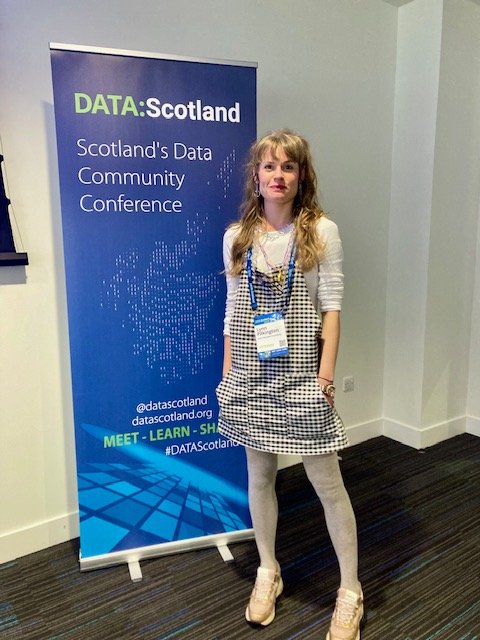Five Ways to Convince People That Your Data Projects are Interesting.
Ages ago I learned that I can be soul-crushingly boring. I’m naturally a fun and creative person; however, my special interests do not light up others like they do for me –law, policy, Equality Act 2010, risk assessments (ooft, I’m getting excited just typing those words). Yet, most people that I engage with react with a polite yawn and a strong urge to finish the conversation as soon as possible.
In response to the above reactions, translating tricky topics into accessible and relevant formats became a super-power of mine. I was reminded of this at the recent Data Scotland Conference. A theme that kept coming was, ‘How do we convince everyone else to get on board?’. This also comes up frequently in my policy work. It’s not an easy task (I’ve had over ten years of perfecting approaches), but here are five principles to get started.
1. Do Your Research
It’s essential that you demonstrate understanding of where your audience is coming from – whether leadership teams, your manager or doing user testing. Things to ask yourself include:
What are their priorities right now?
Who is influencing them?
What have successful projects done previously?
The above questions may lead you to propose a pilot, do further stakeholder engagement or pull in another team to explain why the current dashboard works well for them.
As stated by Chris Voss in ‘Never Split the Difference: Negotiating As If Your Life Depended On It’:
“Negotiate in their world. Persuasion is not about how bright or smooth or forceful you are. It’s about the other party convincing themselves that the solution you want is their own idea. So don’t beat them with logic or brute force. Ask them questions that open paths to your goals. It’s not about you.”
2. Mirror Their Language
Review your jargon and translate it into your audience’s terms. Look at past reports and projects to find out if they use clients or customers, data or information, etc. Embed their terms as much as possible to make your new information seem familiar.
3. Tie Yourself To the Golden Thread
Frame your project as part of the bigger vision of your organisation. The golden thread is a strategic approach that links an organization's actions and decisions to its vision, goals, and values. It's a continuous line of information that helps maintain alignment within the organization.
Your project has just become the launchpad for the new corporate vision.
As Zoe Chance says in, ‘Influence Is Your Superpower: The Science of Winning Hearts, Sparking Change, and Making Good Things Happen’:
“Framing is how spellcasting works in the real world. Just by describing something or giving it a name, you called it into being. Well chosen frame can determine what’s relevant, what’s important, or what’s good. When you frame someone’s experience in a compelling way, you shape their expectations as well as their interpretation of events.”
4. Be Vulnerable
Humans have an innate need to help and fix. If you are really worried about timescales, state that. If you are really passionate about new skills that you have learned, share this. Make your project relatable. And ask for help where you need it. Make others feel useful and involved as this helps share ownership.
5. Validate Their Concerns, and Still Say ‘No’
Instead of approaching conversations with a, ‘Yeah but…’ mindset, practice validating concerns and still disagreeing. For example, ‘I hear that these timescales are frustrating to you, I’d change it if I could’. If you can concede some benefits for the other party which won’t derail you too much, then do this – e.g. adding a supporting function, change the colours. It’s amazing how much this builds rapport.
At the Data Scotland conference, I attended a session with Andrew Balance from Watersons on a similar theme, ‘How to Convince Your Boss To Take A Risk’. Attendees discussed wild solutions to current problems by considering their value, size/pace and, crucially, the excitement factor. This reminded me of the Volkswagen Fun Theory Piano Stairs, one of my favourite behaviour-change marketing stunts, where stairs were turned into a piano to encourage people to use them over the escalator.
Whether you want your boss to approve of your latest data project or to encourage people to take the stairs, when we make things simple, fun and translated into our audience’s language there is a high chance of success. Data can change the world, let’s make sure everyone understands that.
If you need to influence people about your data projects, let’s talk.

